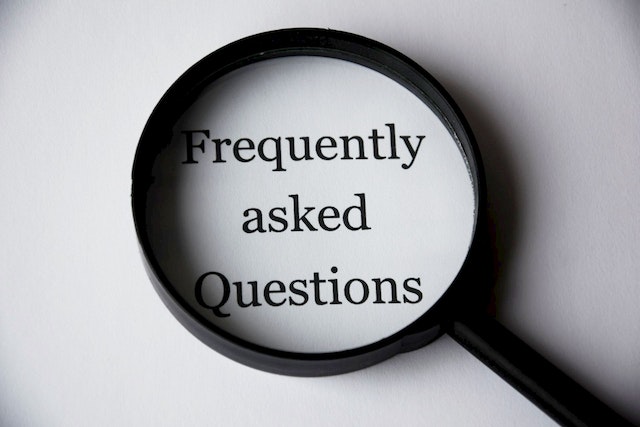Understanding Twitter ad size and how it works will unlock the best possible results for your ad campaigns. The right ad size helps you pass your message effectively and ensures your content appears correctly.
This guide will discuss all you need to know about Twitter ad sizes, from the ideal image size to the correct banner dimensions. You will learn the best dimensions and specifications for Twitter ads and how to see audience sizes for those ads. Read on to get started!

What Are the Ad Size Requirements for Twitter?
X offers various size formats depending on the kind of ad you’re running. Twitter’s flexibility allows for a range of ad types, each with its own set of dimensions and design guidelines.
Therefore, getting the ad size right is your key to ensuring your content displays correctly and performs well across devices. Below are the different ad size requirements for various Twitter ad formats in 2024.
1. Single Image Ads
Single-image ads are the most popular ad format on Twitter. They pair an image with text and a call-to-action, making them versatile for various types of campaigns. Single-image ads can have the following specifications:
- Recommended image size: 1200 x 1200 pixels (square format) or 1200 x 628 pixels (landscape format)
- Minimum image size: 600 x 335 pixels (landscape)
- Aspect ratio: 1:1 (square) or 1.91:1 (landscape)
- File formats: PNG or JPEG
- File size limit: Up to 5 MB for images
2. Video Ads
Video ads are a great way to capture users’ attention and can potentially increase engagement on Twitter. The platform supports different size specifications, but it depends on the video format, whether it is landscape, vertical, or square.
These are the specifications for different types of video ads:
- Landscape: 1280 x 720 pixels
- Square: 720 x 720 pixels
- Vertical: 720 x 1280 pixels
- Minimum video size: 320 x 180 pixels
- Aspect ratio: 16:9 (landscape), 1:1 (square), or 9:16 (vertical)
- Maximum file size: 1 GB
- Video duration: Between 3 seconds and 2 minutes, 20 seconds
- File format: MP4 or MOV
- Frame rate: 29.97 FPS or less
- Video codec: H.264 with AAC audio
3. Carousel Ads
Carousel ads allow you to showcase up to six images or videos in a single ad. This format is good if you want to highlight multiple products in one ad. For Carousel ads consider the following:
- Image size per card: 1200 x 1200 pixels (recommended)
- Aspect ratio: 1:1 (square)
- File formats: PNG or JPEG for images
- Video size per card: 1280 x 720 for landscape, 720 x 720 for square, 720 x 1280 for vertical
- Max file size: 5 MB per image or 1 GB per video
- Carousel count: 2–6 cards (image or video)
4. Website Cards
Website cards drive traffic to external websites. These sorts of ads can be an image or a video with a headline, call-to-action, and a clickable link. They have these specs:
- Image size: 1200 x 628 pixels (recommended)
- Aspect ratio: 1.91:1 (landscape)
- Video size: Follows the same specifications as standard video ads
- File formats: PNG or JPEG (images), MP4 or MOV (videos)
- Max file size: 5 MB (images), 1 GB (videos)
5. App Cards
App cards are mainly for advertisers looking to drive app downloads or re-engagements. You can have an image or video app card. They usually include the app details and a direct link to download the app. Here are the dimensions for app cards:
- Image size: 1200 x 628 pixels
- Aspect ratio: 1.91:1 (landscape)
- Video size: Follows the same specs as other Twitter video ads
- Max file size: 5 MB (images), 1 GB (videos)
- App icon size: 160 x 160 pixels
6. Conversation Ads
These types of ads encourage users to engage by offering multiple call-to-action buttons. They work well for driving interaction and expanding conversations around a product or service and have these specifications:
- Image size: 800 x 418 pixels or 800 x 800 pixels
- Aspect ratio: 1.91:1 (landscape) or 1:1 (square)
- File formats: PNG or JPEG
- Max file size: 5 MB
7. Twitter Ad Banner Size
If you’re using banner ads in promoted trends or profiles, the specifications vary slightly:
- Recommended banner size: 1500 x 500 pixels
- Aspect ratio: 3:1 (wide banner format)
- File formats: PNG, JPEG
- Max file size: 5 MB
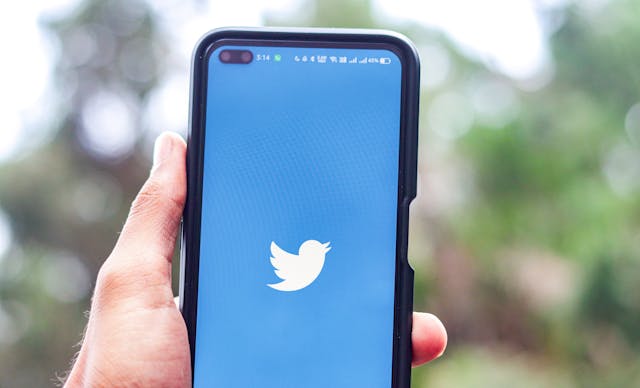
How To See Audience Sizes on Twitter Ads
Knowing your audience size on Twitter ads is a great way to evaluate the market for a specific ad campaign. It tells you how far your ad can possibly reach and its potential for success. Information like this is vital for effective Twitter marketing campaigns.
You can tailor your targeting to a welcoming audience, optimize your budget, and measure campaign performance accurately. Fortunately, Twitter Ads offers tools to help advertisers gauge their audience size during the campaign creation process. Here is how to do it.
1. Set Up Your Twitter Ads Campaign
You first need to set up a campaign within Twitter Ads to see your audience size. Here’s a quick rundown of how to begin:
- Log onto your account.
- If you’re new to Twitter Ads, you’ll have to set up your billing information before you can continue.
- Select Your Campaign Objective: Is your goal to drive website traffic, gain followers, or increase video views? After setting up the basic campaign structure, you can then move on to defining your audience.
2. Define Your Audience
The next step is refining your audience targeting strategy. Twitter offers several layers of customization that allow advertisers to target users based on specific criteria, such as:
- Location: You can choose to target users in specific countries, regions, or even cities. The audience size adjusts based on the locations you select.
- Age and gender: Narrow down your audience by setting age and gender preferences. It will help ensure your ads reach a more relevant group of users.
- Language: If your campaign is language-specific, select the right language necessary for it.
- Device targeting: Target users based on the type of device they’re using, such as mobile, desktop, iOS, or Android.
- As you adjust the target settings on Twitter, an Audience Size Estimate will appear, showing the potential reach of your ad.
3. Look at the Audience Size Display in Twitter Ads Manager
After completing all your audience settings, Twitter will provide an estimated audience size. This number appears in the campaign summary section and shows how many people fall within your target audience. The estimate includes:
- The targeting options you select (location, interests, etc.).
- Historical data on user behavior within the platform.
- The availability of Twitter users who match your criteria.
4. Optimize the Audience Size
The key to running an effective Twitter ad campaign is finding the right balance between a broad and narrow audience. If your audience size is too small, it can limit your campaign’s reach, and you’ll miss out on potential engagement.
On the other hand, an audience that is too large may lead to wasted impressions and a diluted message. Here are some factors you can adjust to avoid this:
- Expanding or narrowing location targeting: Expanding your location range can increase your audience size. Narrowing it down to specific cities or regions will decrease it.
- Tuning interests and behaviors: Instead of targeting broad categories, narrow down to specific, highly relevant interests for better targeting.
- Adjust age: If your product is age-specific, adjust your settings for a wider or narrower age bracket. This way, you can reap better rewards from your ad across the board.
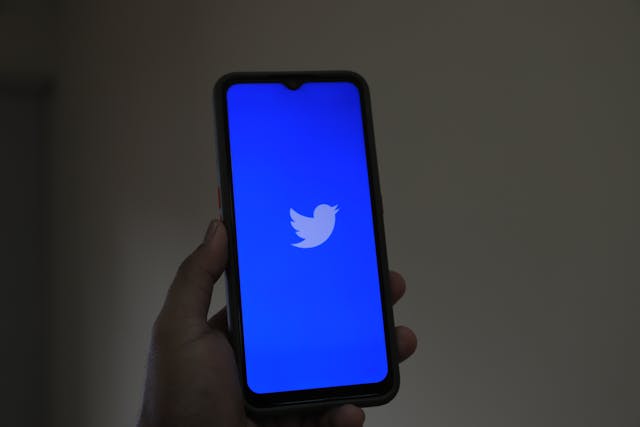
How To Choose the Perfect Twitter Ad Image Size
The perfect Twitter ad sizes will ensure your campaign stands out and performs well across different devices. Incorrect image dimensions can lead to cropping, poor resolution, or an unprofessional look, which will affect engagement. Follow these steps to select the ideal image size for your Twitter ads.
1. Consider Your Campaign Objective
Twitter offers campaign objectives for driving traffic, increasing engagement, generating video views, and lots more. While the image size might remain consistent across most objectives, how the image fits into your overall message matters. Ask yourself:
- Do you want to highlight a product or service?
- Are you aiming to evoke a certain emotion with your visuals?
- Should the image include text to complement your ad message?
2. Understand Twitter’s Image Size Guidelines
Before you start designing your ad visuals, take note of Twitter’s recommended image sizes. Twitter’s guidelines help ensure your images look great on desktop and mobile devices. Here are the general recommendations for most Twitter ads:
- Recommended Image Size: 1200 x 675 pixels
- Aspect Ratio: 16:9
- Maximum File Size: 5 MB for images (JPG or PNG)
3. Design for Multiple Devices
Twitter ads appear on both mobile and desktop devices. Because more than 80% of Twitter accounts are mobile users, according to Statista, designing your image with a mobile-first approach is important. Here’s how to optimize for different devices:
- Keep key elements centered: Place important elements like your logo, text, or product image toward the center. Doing this ensures that nothing essential gets cut off on smaller mobile screens.
- Test on different devices: Preview your image on various screen sizes to confirm that it looks good across platforms.
4. Use High-Resolution Images
Resolution is a key factor in maintaining the quality of your image. A low-resolution image can appear blurry, especially on high-resolution devices. Always use high-resolution images that meet Twitter’s 1200 x 675-pixel guideline. If you need to resize an image, use professional design software that preserves quality.
5. Limit the Amount of Text on Images
While Twitter allows you to include text in images, avoid overcrowding your visuals. Too much text can overwhelm the user and make your ad look unattractive. A simple rule to follow is the 80/20 rule, where 80% is the image and 20% contains text.
Use Twitter’s tweet text space for any important message instead of cramming it into the image. If you do include text in your images, make sure it is:
- It’s clear to see across both desktop and mobile.
- It is in a font that matches your brand’s identity.
- It is positioned where it won’t get cropped.
6. Comply With Twitter’s Ad Policies
It’s important to ensure that your visuals align with Twitter’s ad policies. Avoid using misleading content, offensive imagery, or material violating intellectual property laws. Ads that fail to comply with these policies risk being rejected or flagged.
To stay compliant, review Twitter’s Ads Creative Guidelines. The document outlines acceptable formats, dimensions, and content standards.
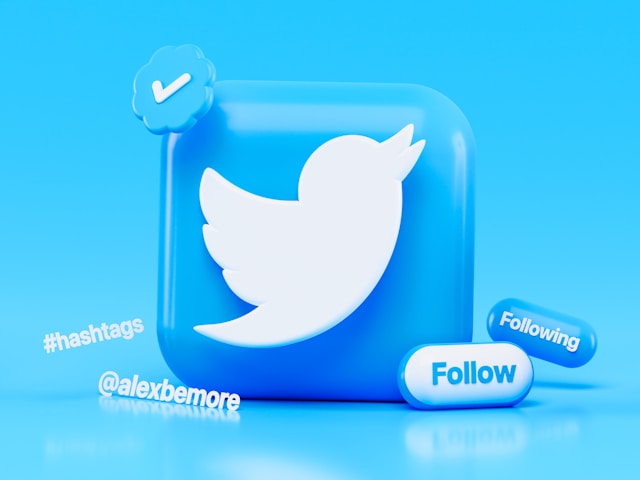
2024 Twitter Ad Banner Size Requirements for Effective Ads
The perfect Twitter ad banner is more than just great design. You must ensure your banners meet Twitter’s size requirements to avoid image distortion, cropping, or reduced quality. Here’s a look at the Twitter ad banner size requirements for 2024 and how to optimize them for maximum impact.
1. Standard Twitter Ad Banner Size
The recommended banner size remains 1500 x 500 pixels for most Twitter ad formats. This format size ensures that your banners display properly across both mobile and desktop devices without cropping or misalignment.
The banner’s aspect ratio should be 3:1, allowing for a consistent appearance across all screen types. If you stray from these dimensions, Twitter might automatically resize your banner, which may cause poor visual quality or cropping.
Stick to the recommended 1500 x 500-pixel size. This guarantees that your banner will display correctly and look sharp.
2. File Size and Format
Twitter allows banner images to be a maximum of 5 MB. Use compressed, web-optimized images to ensure fast load times and smooth user experiences. Tools like TinyPNG can compress your files without losing quality. As for file format, Twitter accepts JPEG and PNG formats for banners.
3. Profile Header Banner Size
Optimizing the profile header banner is just as important if you’re running campaigns that focus on your brand’s profile. The ideal size for a Twitter profile header remains 1500 x 500 pixels as well. Ensure your profile banner is clean and professional and showcases your brand identity.
4. Twitter Ads Banners for Video
Twitter allows banners for in-stream video ads. The ideal dimensions for in-stream video ads differ slightly:
- Recommended Size: 1920 x 1200 pixels or 1200 x 1200 pixels for square videos
- Aspect Ratio: 16:9 or 1:1 for squares
- Max File Size: Up to 1 GB for videos
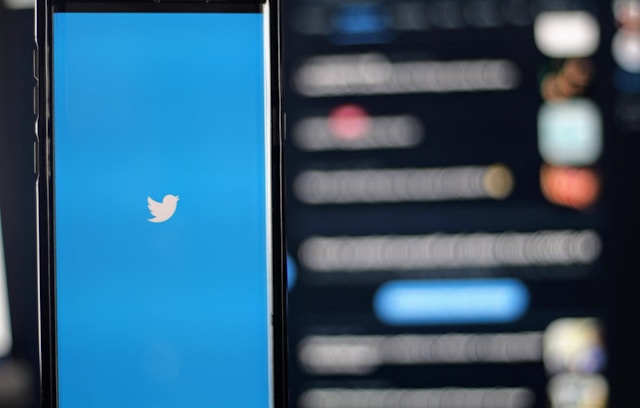
Why Image Size for Twitter Ads Matters
Digital advertising continues to evolve, and platforms like Twitter have become profitable spaces to reach and engage with audiences online. Image size is one of the most crucial factors determining the success of a Twitter ad campaign.
The right image size puts your ads in front-row seats to attract clicks, engagement, and conversions. Here’s why image size for Twitter ads matters and how it can impact your ad’s performance.
1. To Make an Impression
The image is usually the first thing a user notices in an ad. When scrolling through their Twitter feed, they’ll see dozens of posts in seconds. But, a properly sized, high-quality image can make your ad stand out from the rest. The right image size ensures that your visuals are crisp, clear, and professional, leaving a strong first impression.
2. To Avoid Cropping
Twitter uses specific image size requirements for different ad formats to maintain uniformity across the platform. If you upload an image that doesn’t fit the dimensions, Twitter will automatically crop it to fit the ad space.
For instance, a single-image ad should use an image size of 1200 x 675 pixels. The aspect ratio must be within 16:9 to ensure it displays perfectly. If you upload an image that doesn’t match these dimensions, Twitter might crop the sides or top of the image. It will leave your ad looking incomplete and unprofessional.
3. To Maximize Engagement Rates
The ultimate goal of a Twitter ad is to drive user engagement, whether through clicks, retweets, or replies. Ads with appealing and properly sized images tend to generate higher engagement rates than those with poorly sized visuals.
An eye-catching image that fits perfectly in the ad space increases the likelihood of users pausing to engage with it.
4. For Ad Quality Score
Twitter assigns an Ad Quality Score to each ad based on its relevance, engagement rate, and overall performance. Ads with higher quality scores are more likely to be shown to users and cost less per engagement.
Image size affects your ad’s quality score. Poorly sized images lead to lower engagement rates and fewer impressions, giving your ads a low-quality score.
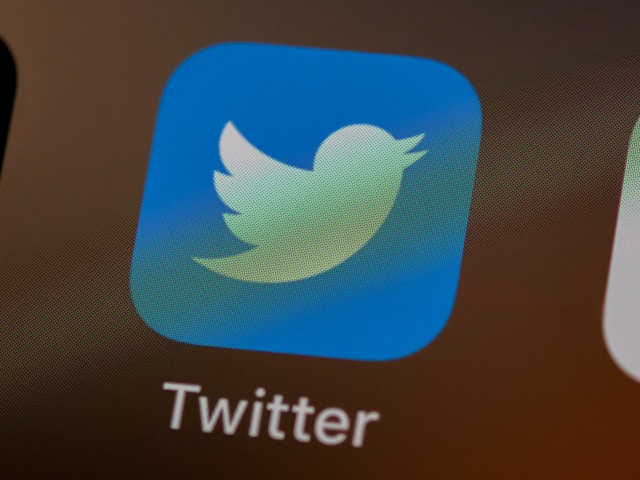
Optimize Your Twitter Ad Campaigns With TweetEraser
Understanding the ad size for the platform is crucial to running successful ad campaigns. TweetEraser helps you streamline your Twitter ad strategy by ensuring that only the most relevant content is on your timeline. With TweetEraser, you can bulk-delete outdated or irrelevant tweets, making room for fresh ads that follow the Twitter ad size specifications correctly.
Our other services include unliking X posts and deleting tweets from archives. We are proud of the numerous testimonials from our satisfied users worldwide.
Ready to give TweetEraser a try? Simply sign in with your X account, set up your account, and begin deleting tweets. Start organizing your Twitter timeline today!

FAQ
What are the size specs for Twitter ads?
Here are some specifications for Twitter ads:
- Image size: Images should be 1200 pixels wide but can be any height up to a 1:1 ratio. The recommended size for a 1.91:1 aspect ratio is 1200 x 628 pixels.
- Aspect ratio: The recommended aspect ratio is 1.91:1 or 1:1. Images display at a 16:9 ratio on mobile.
- File size: The maximum file size is 1 GB, but videos should be under 30 MB for optimal performance.
- File format: Twitter supports JPEG, GIF, and PNG file formats. JPEG is recommended for photos, and PNG is recommended for infographics and illustrations.
What are the sizes of the images for Twitter ads?
The recommended image sizes for Twitter ads vary depending on the type of ad:
- Single and multi-image tweets: Minimum width of 600 pixels, but larger images look better
- Website card image: 800 x 418 pixels for a 1.91:1 aspect ratio or 800 x 800 pixels for a 1:1 aspect ratio
- App card image: 800 x 418 pixels for a 1.91:1 aspect ratio or 800 x 800 pixels for a 1:1 aspect ratio
- Carousels: 800 x 418 pixels for a 1.91:1 aspect ratio or 800 x 800 pixels for a 1:1 aspect ratio
- Direct Message card: 800 x 418 pixels for a 1.91:1 aspect ratio
- Conversation card: 800 x 418 pixels for a 1.91:1 aspect ratio
Why is size important in Twitter ads?
Depending on the purpose of your tweet, the correct ad size can enhance its performance. Usually, larger ad sizes will perform better as they are more likely to be seen by users.



